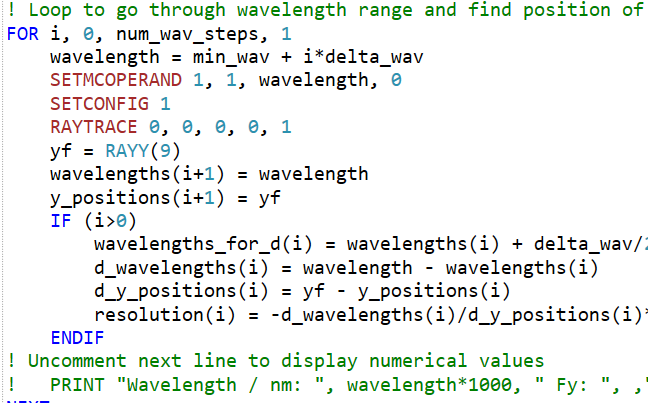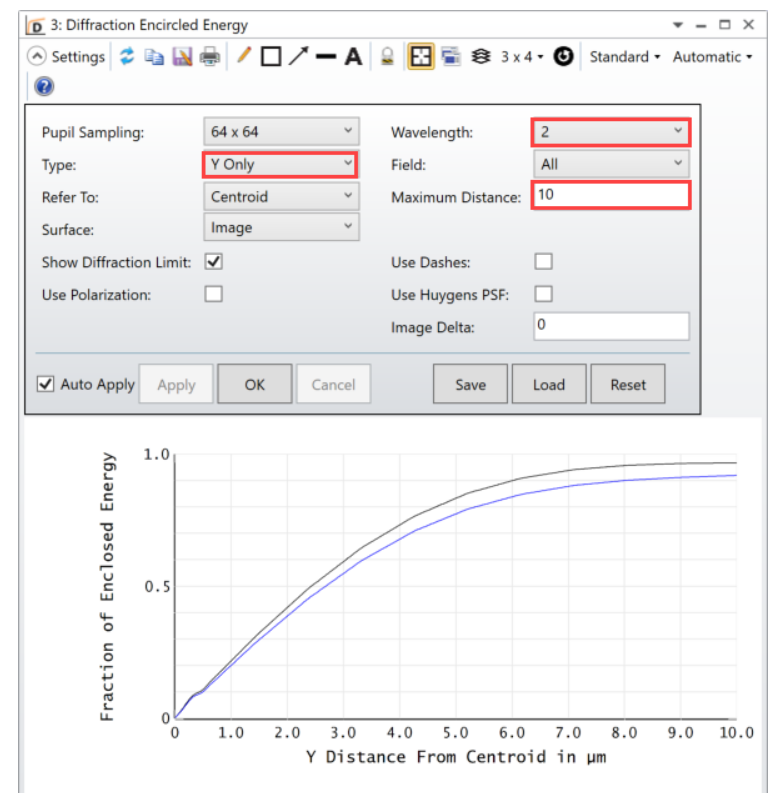Hi there,
I am learning to design a spectrometer referring to this tutorials
https://www.zemax.com/blogs/free-tutorials/how-to-build-a-spectrometer
and there is one ZPL file to calculate the position of wavelength and resolution of the spectrometer.
I just wonder the [RAYY] command get which point on the image surface?
since there are chief ray, centroid , middle and vertex ( I guess something similar to spot diagram)
(and I have searched the zemax help, only got this, hmm ,which ray intercept?

)

thank you !









